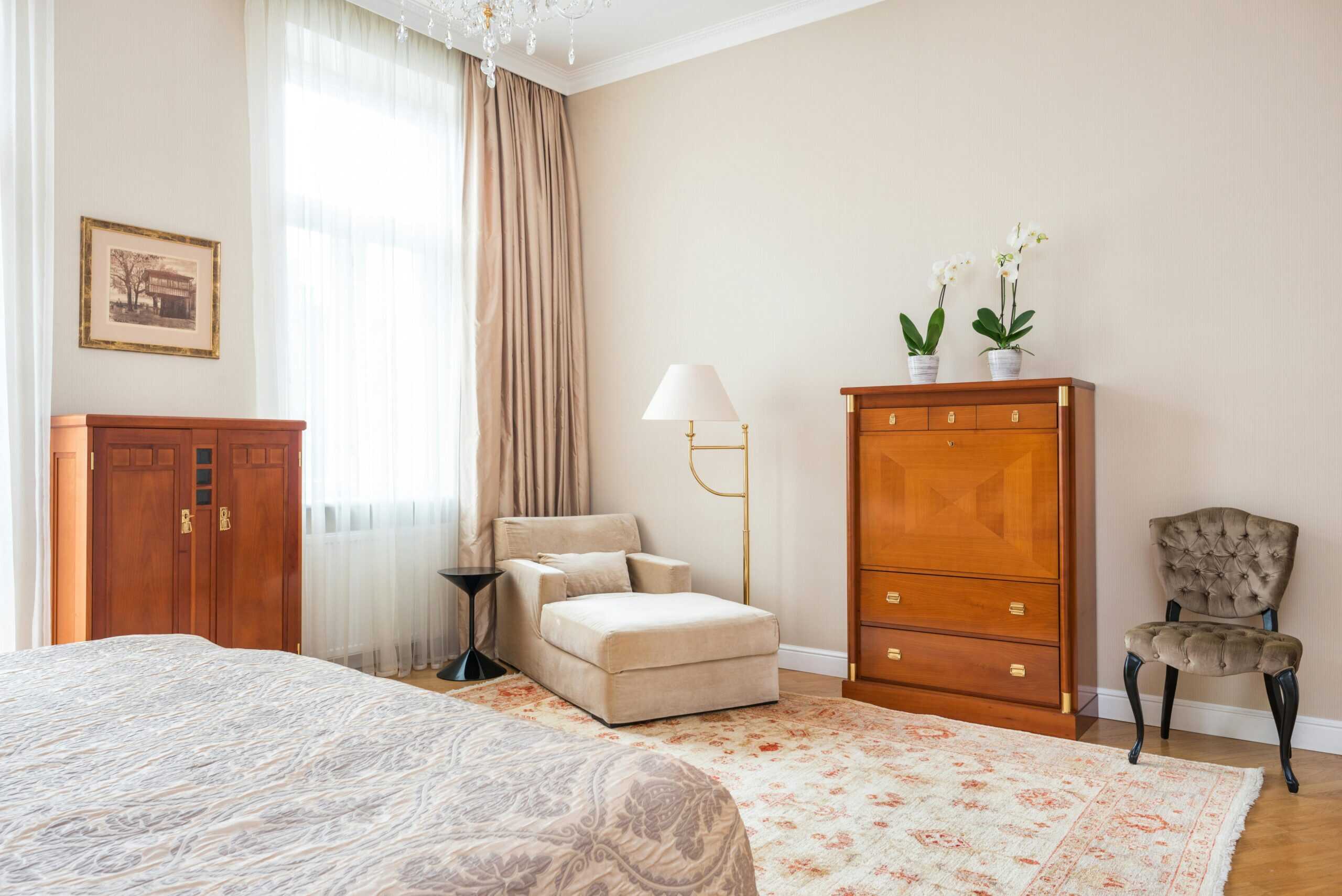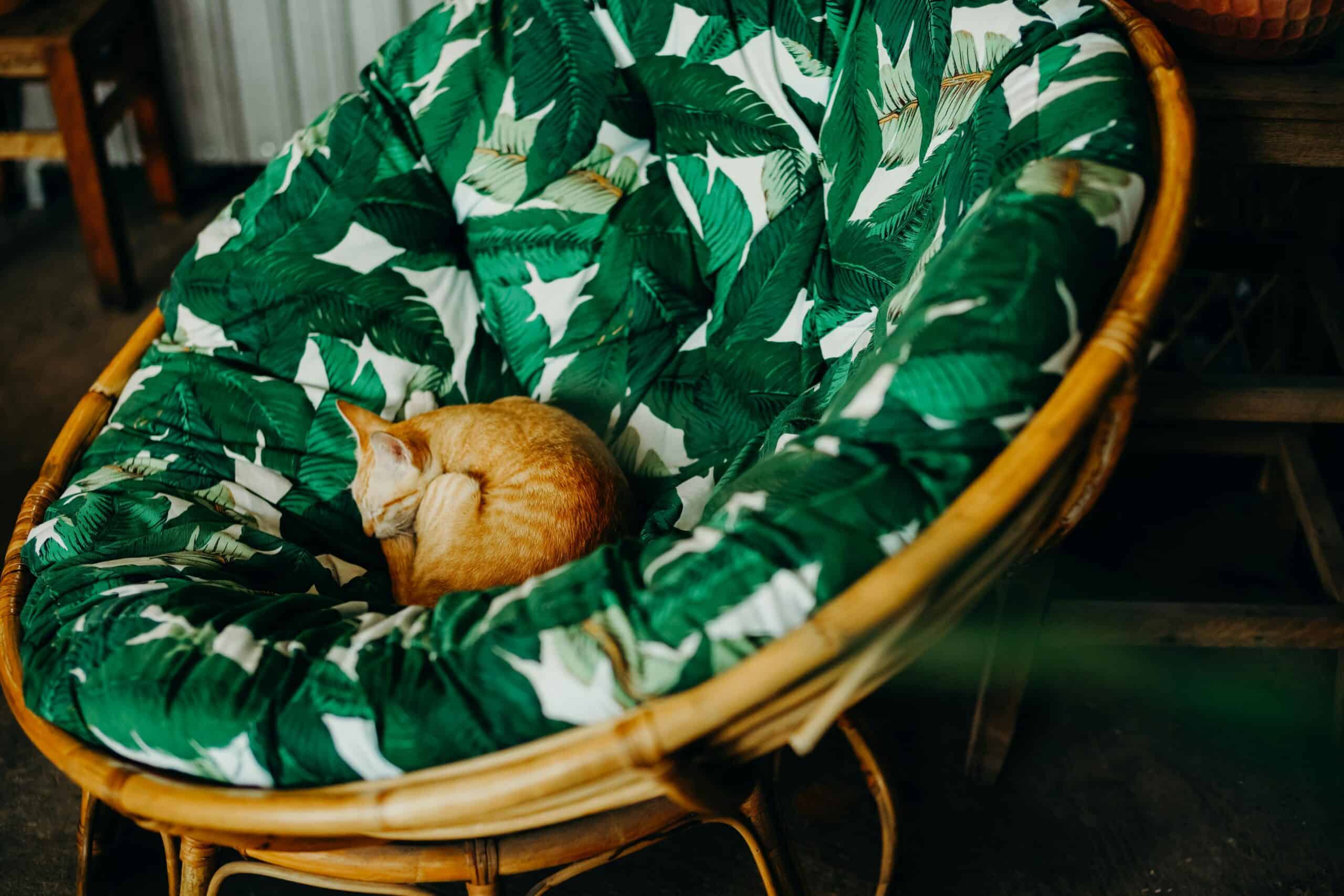Are you looking for a fashionable and practical window treatment that will add to the beauty and functionality of your home? Plantation shutters are the way to go! These timeless window treatments have been around for generations and are well-known for their elegant and classy appearance.
Besides, plantation shutters are an excellent investment that offers increased home value, interior design, curb appeal, energy efficiency, and functional light control. Considering that multiple shutter styles and options are on the market, you should be careful with your selection to ensure you get the most out of your investment.
What Are Plantation Shutters?
Plantation shutters got their name from the plantations of the large coffee, tobacco and or cotton growing establishments especially in the southern part of the United States. The shutters of the plantations were mostly for the purpose of controlling light and air during the hot summer season.
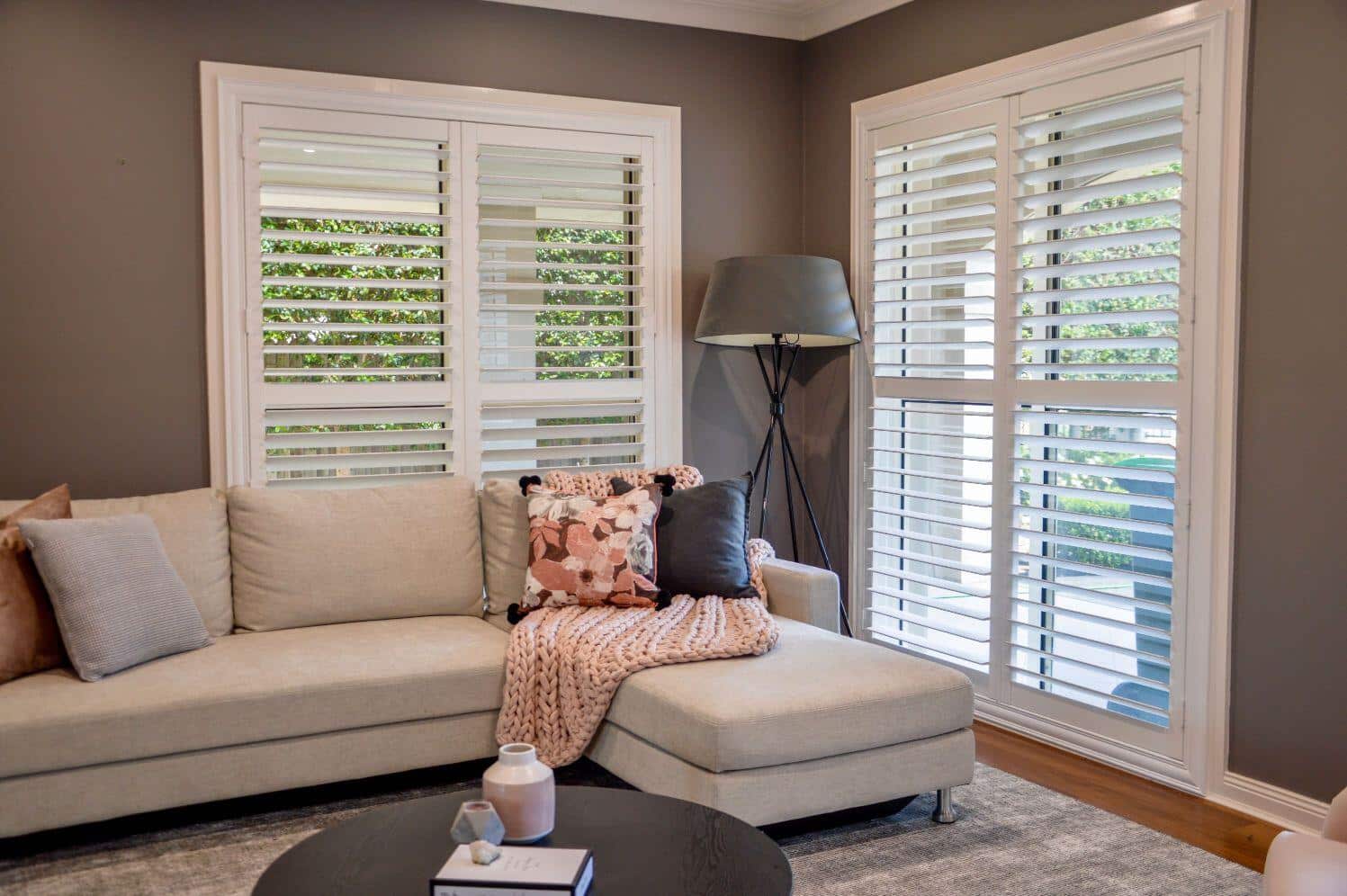
Image Source: doorsplus.com.au
Plantation shutters are window treatments made by installing adjustable louvers or slats on a strong frame. You can control the amount of light and privacy in a room by tilting the louvers. Besides, plantation shutters are usually made of wood. However, they can also be made of other materials like vinyl or composite.
What Are the Main Types of Plantation Shutters?
Plantation shutters are available in various materials, finishes, and styles. That said, we will discuss the different types of plantation shutters based on the materials used to craft them.
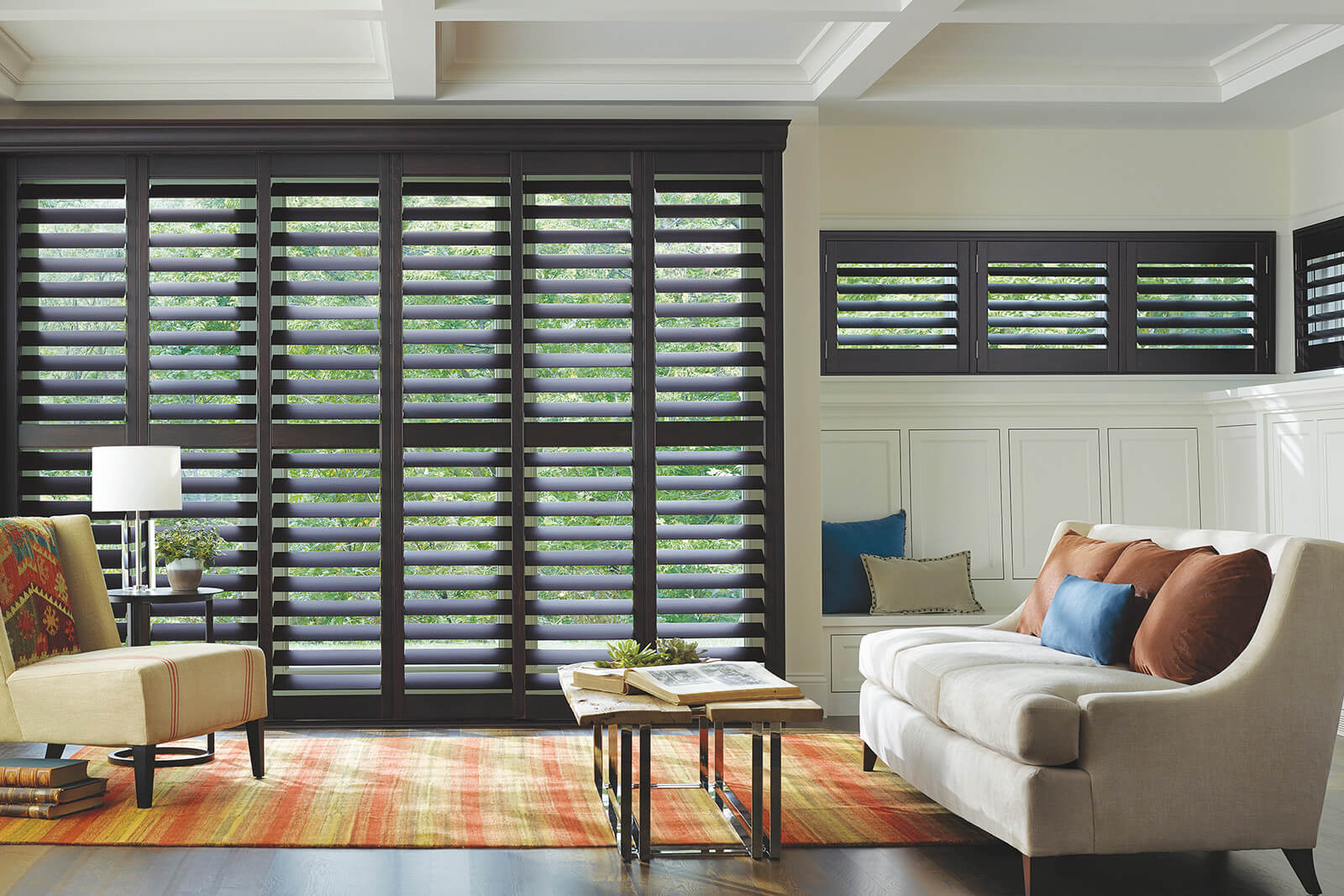
Image Source: luxaflex.com.au
1. Wood plantation shutters
Among the two main types of plantation shutters presently in the market, wooden plantation shutters are by far the most common. They can be made from engineered or solid woods and add the best natural look and feel to any environment. Further, these wood shutters come with different types of finishes namely stain and paint in order to fit in the interior d.Meta Tags: wood shutters, interior design, wood paint.
The shutters are made from wood, and they can be adjusted to the width of the window and their length as well. They often provide very good thermal performance and, as a result, can contribute to the reduction of heating and cooling costs throughout a year. But they are not so suitable for places with much humidity.
2. Vinyl Plantation Shutters
These types of plantation shutters are made using PVC which is an acronym for polyvinyl chloride, to make the shutters moisture, warping and fading free. They are typically perfect for moisture rich zones such as kitchens, bathrooms or laundry.
Also, they are available in a range of colors and finishes and some come in the wood finish to match any of the current interior styles. Also there are easy to clean and also very easy to maintain and therefore they are suitable for anyone who would want an easy to maintain option.
3. Composite Plantation Shutters
Composite plantation shutters are made of natural wood and have synthetic components such as PVC or MDF. It unites strength and water repellent characteristics of vinyl material with natural look and warm touch of real wood. Other advantages include the following:
-
- Affordability.
-
- Customization to fit any window size and shape.
-
- Great insulation properties for energy efficiency.
However, these plantation shutters might not have the same natural warmth and texture as real wood shutters. They might not be as durable as solid ones.
4. Aluminum Plantation Shutters
Of all types, aluminum plantation shutters are best suited for homes with fashionable minimalist or industrial appeal. They are strong, light/affordable, and will not corrode/rust, the primary benefits in high humidity environments. Aluminum plantation shutters are available in an assortment of colours and sheens and may be molded to include any shape or size of the window. But they do not have the warmth feeling and conscious likeability that wooden shutters do.
What You Need to Know When Buying Plantation Shutters

Image Source: stevesblindsandwallpaper.com
1. Shutter Production Quality Differs Greatly
Plantation shutters can be produced anywhere, so knowing what goes into making quality shutters and how they’re made helps you make an informed choice. When buying your shutters, find out the type of joinery used to make the shutter doors. Ask your vendor how they cure their wood because many wood treatment and curing alternatives can significantly impact your shutters’ lifespan or make them warp prematurely.
Choose finish and paint options to keep your plantation shutters looking great for years. You can consult experienced and reliable shutter vendors for good-quality, custom-made shutter plantations.
2. Tilt Rod Control
While functionality is vital, it blends with the shutter’s overall look. Tilt control choices range from invisible to visible. The invisible tilt control is a popular shutter upgrade that gives you a more modern, contemporary look. The hidden tilt rod keeps your view clear and accessible and reduces the number of lines for a sleek, clean look. There’s also a split tilt that allows tilt independence in multiple zones of the panel. They are ideal for dining and bathroom rooms.
Don’t forget motorization since it’s excellent for hard-to-reach windows. You can program plantation shutters to wake you in the morning and close during the day’s heat to safeguard your home from heat transfer and harmful UV rays.
3. Louver Size
Louvers are slats found in horizontal shutters that let light in and out. They vary in width, with each creating a different look and functionality. Finding the right louver size depends on how much light you want to let in, your desired maintenance level, and your preferred style.
Small windows pair well with smaller louver sizes because they complement the proportional opening. Nevertheless, they are difficult to clean. Wide louver shutters provide a grander feel and make big windows seem even bigger.
4. Plantation Shutter Materials
Plantation shutters are made effortlessly from different materials that match your style and preferences. The materials may include PVC, finger-jointed wood, medium-density fiber, alder, laminated wood, faux wood, composite wood, basswood, laminated shutters, cedarwood, vinyl, and synthetic materials.

Image Source: bestbuywindowtreatment.com
When selecting the type of shutter to be used, there are several factors that need to be considered, with the most important one being the nature and style of the house in question. If they are to be installed in the kitchen and the bathroom ensure that you purchase vinyl or composite shutters. Avoid vinyl and aluminum because these materials are unnecessary and are more likely to make your living room plantation shutters look cheap. Wood is a better option in this case.
5. Installation Is Key
When installing shutters, ensure they’re installed per the manufacturer’s requirements and by qualified, professional personnel to avoid voiding your warranty. Plantation shutters take in all the UV rays that come through the window. So, if the frame isn’t installed at the perfect level, the shutter might eventually bend, causing warpage, damage, and cracks. Consider using factory-certified installers for proper installation, protecting your warranty.
6. Cost
Blinds and shades for example are usually more costly than interior shutters. However, given their long life, and the attractiveness of their design, they will serve as a great investment for your house. Remember that plantation shutters’ price may vary based on various factors among them material type, shutters size as well as style.
How to Install Plantation Shutters
Here are the basic steps to follow when installing plantation shutters:
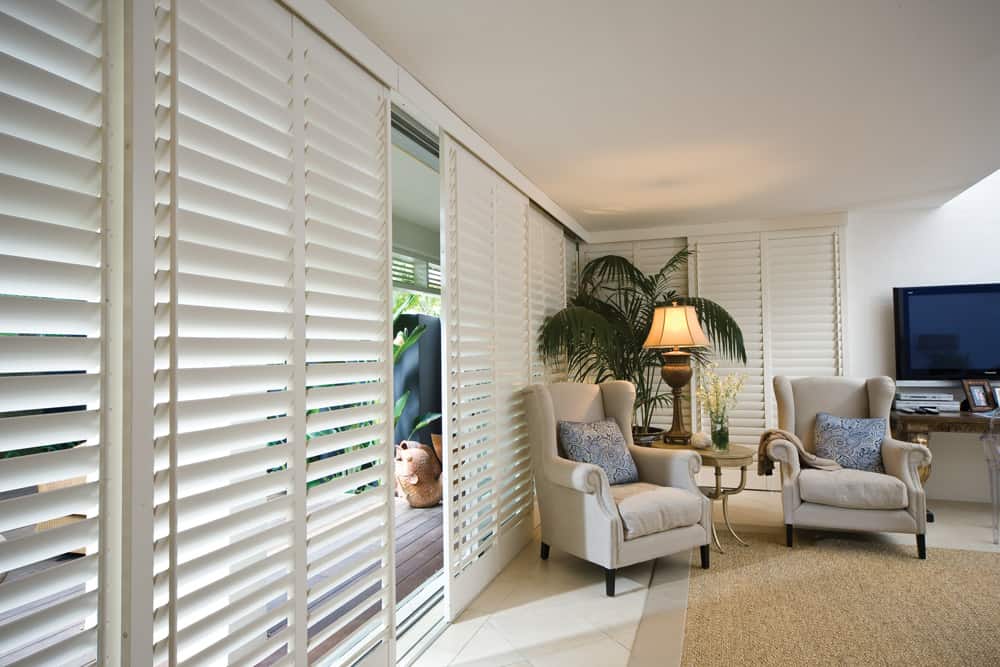
Image Source: newportshutters.com.au
1. Measure the Windows
Find the width and height of the windows you want to curtain. Adapt the shutters to the windows to fit in nicely: Measure the width, height as well as the depth of the shutters. All the windows have to be measured separately because even the windows which are located in the same room can be of different dimensions.
2. Order your Shutters
After measuring the windows, you can order your indoor plantation shutters. Ensure you choose the right material, design, and color to suit your home decor and meet your needs.
3. Gather your Tools.
To fit your own plantation shutters, you will require measuring tape, screw driver, screws, anchor screws and a level. Before undertaking the step by step installation guidelines detailed below, make sure that you have all the necessary tools.
4. Install the Frame
There must be four parts to each shutter frame. Use the plastic connectors in the package to assemble the frames, and smoothly tap the connectors into the coinciding slit in the existing window frame using a rubber mallet. Ensure your frame is even by joining the right and left sides to the top and bottom. The good thing is that most pieces are labeled, making this easy. Tap the ends of the connectors into their pieces until they are flush.
5. Attach the Hinges
Get the frame and put it in the window. If it fits well, attach the frame to the window by drilling two screw holes at the top. But if your frame has predrilled holes, you can insert the screws into those, ensuring you only attach the top ones. The bottom of the frame needs to be able to move freely.
We recommend a second person holding the frame against the window while inserting the screws. If your frame is not correctly fitted, either your initial measurements are inaccurate, or the frame was not put together correctly. Ensure the frame pieces are well connected and even. If you are unsure whether or not you have sent the exact measurements, call the shutter company for assistance.
6. Hang the Shutters
Put the panel onto its frame and with the help of hinge pins provided in the package, ‘lock’ the panel in its position on the frame. Next you insert a pin at the center of each hinge to join them and rework the panels and the frame nicely.
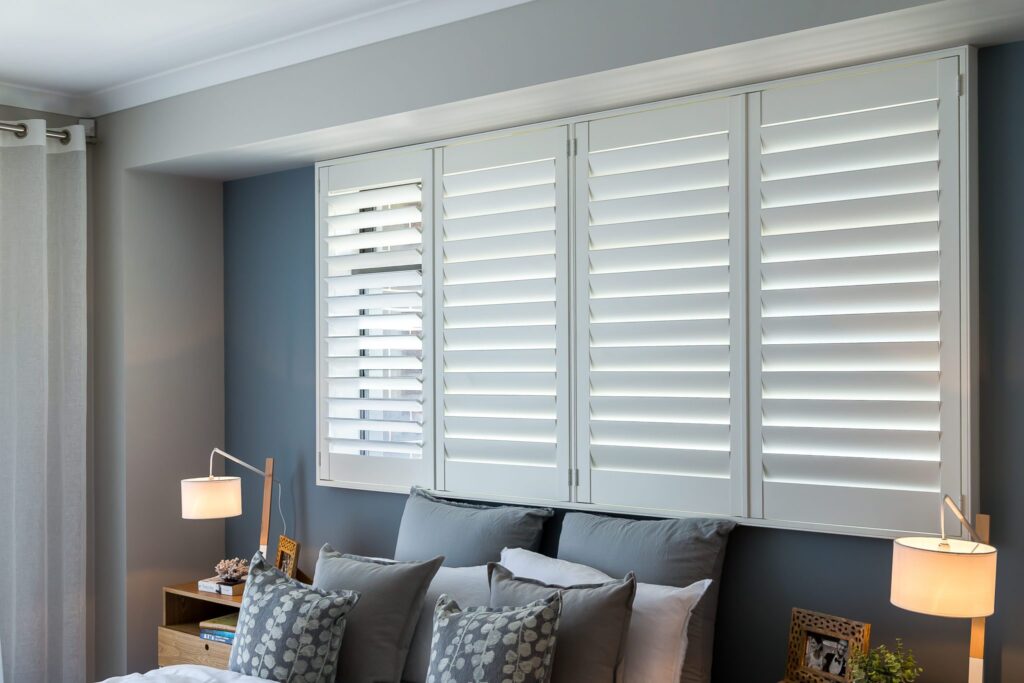
Image Source: mydirectblinds.com.au
Check if the fitting of the panel door meets into the frame by opening and closing the door. The bottom of the frame should be soft in order to push this around in order to align it with the panel on the side. It should be very smooth, and without any big spaces or jagged edges. As a final check that all is straight you can then use the level.
Once your panel is on the frame correctly align the bottom screws and every other screws you have and fix them tightly. Screw the panel firmly in place carefully, while making sure that the frame and the panel are still in position.
7. Install the Locking Mechanism.
Standard screws have the locking mechanism, so use a slightly smaller drill bit to create holes for the screws to be later inserted to. Put the locking mechanism onto the holes and tighten it with screws that must have been provided. Depending on the type of shutters that you have, the type of lock that you will need is catch, latch or magnet. To this, we suggest that people should adhere to the manufacturer’s instructions because they tell you how tightly you have to tighten the locking mechanism.
8. Test the Shutters
Finally examine the plantation shutters to ensure that they glide smoothly after fitting. Make sure they slide in and out properly and that they are well fastened by pulling and pushing the doors back and fro. Likewise, wipe the area to do away with all the mess once your shutters are put into place and any leftover material discarded.
What Are the Benefits of Plantation Shutters?
Plantation shutters offer homeowners various benefits, as briefly mentioned earlier, which include:
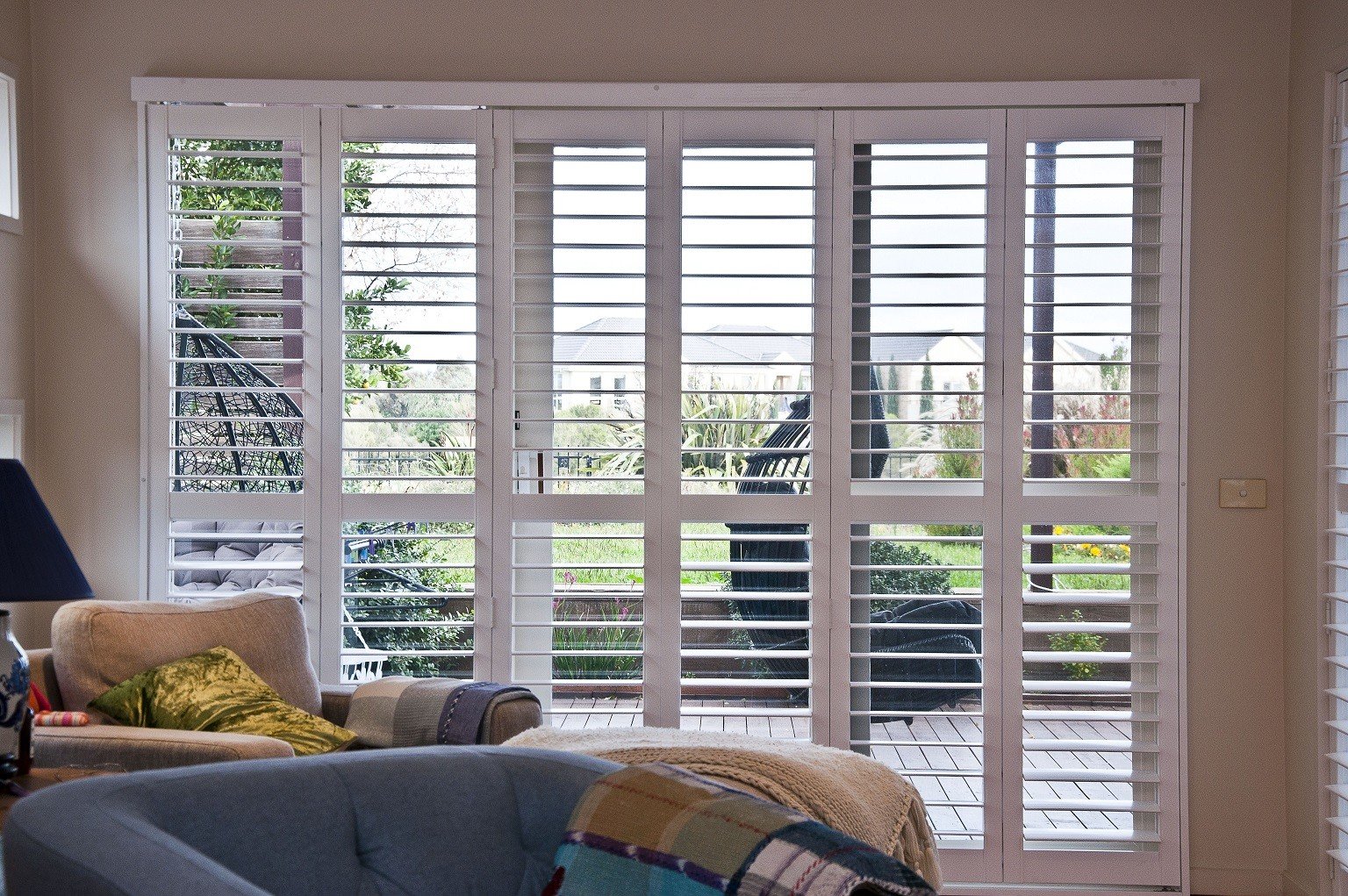
Image Source: diyplantationshutters.com.au
1. Light Control
Interior plantation shutters offer great light control, making it easy to change how much light gets into a room. This makes them perfect for bedrooms and media rooms where you want to block out light partially or completely.
2. Privacy
Plantation shutters usually offer great privacy control. You can adjust the louvers or slats to allow light while keeping your privacy or close the window shutters completely for total privacy. This makes them among the best window coverings for rooms facing a busy street or neighboring homes.
3. Energy Efficiency
Due to their resistance to heat, light and humidity, plantation shutters are one of the best energy efficient window treatments you can consider. When closed they separate the interior from exterior and help to maintain cooler temperature during hot months and warmer during the cold ones. This can make your house very comfortable and cost effective irrespective of the season and weather conditions.
4. Durability
Plantation shutters are more long-lasting than interior window shutters because they are designed from high-quality materials like wood, vinyl, or composites. They can sustain regular usage without warping or fading and look good for a long time. That’s why they are a wise purchase for your home in the long run.
5. Easy Maintenance
Cleaning plantation shutters is relatively easy and does not even require much attention to be paid to for maintenance. These do not accumulate dirt easily and only need a wipe down, sometimes monthly, comparing favorably to the window blinds or curtains. Due to this, they are ideal for those persons who will be happy to spend a lot of time washing their window treatments.
6. Aesthetic Appeal
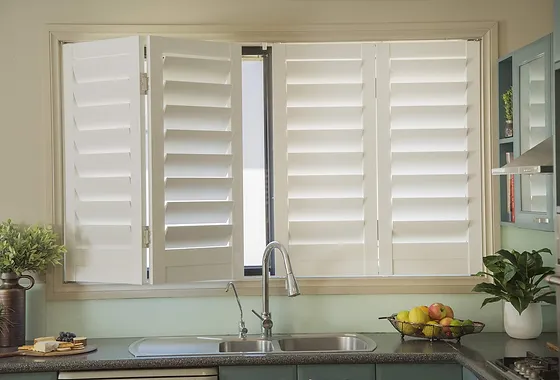
Image Source: oasisblinds.co.uk
Plantation shutters work best for your home as it has a classic look and it enhances the beauty of your house. They do not protrude, and you end up with neat frames that make windows seem larger than they actually are. Besides, through their ability to be adjusted in order to allow some air to pass through in the form of louvers their application can help in making a given space appear as it is much bigger than it actually is.
7. Customizable
As with curtains and blinds, plantation shutters can be arranged to match the specific size or design of the window including arches or triangle shaped. This way they can be adjusted according to one’s requirements as well as his or her style consideration.
Endnote
Plantation shutters are a significant investment you wouldn’t want to compromise on. Discussed above are the things you should know when buying them.
Frequently Asked Questions on the Plantation Shutters
1. What are the disadvantages of plantation shutters?
Though plantation shutters have many benefits, there are also several disadvantages:
-
- Although plantation shutters can be mounted as a DIY project, getting them well-fitted and aligned to the window frame can be tricky.
-
- Plantation shutters are usually more costly than other window treatment options like curtains or window blinds.
-
- Though plantation shutters come in various styles and designs, they might not be as versatile as other window treatment options regarding color options or patterns.
-
- While plantation shutters provide great light control options, some homeowners might find they don’t offer as much flexibility as other window treatment options.
-
- Though plantation shutters are easy to clean and maintain, they usually require extra attention to ensure they are always in good condition.
2. What are plantation shutters used for?
Plantation shutters are used in different scenarios as they give you the opportunity to control the amount of light that you want to allow in a given room. They can also be great for privacy as the views from outside can be prevented while at the same time allowing light into the room. In addition, plantation shutters may also be extremely beneficial to the energy performance of your house as they offer protection from heat in the summer and hold heat in during the winter. Furthermore, they can spice up any interior with something stylish and unique, as it has minimalist and clear-cut shapes.
3. Why are plantation shutters so expensive?
Plantation shutters are usually more costly than other window treatments like blinds or curtains:
-
- They are made of high-quality materials like hardwood, composite, or vinyl, which can be more costly than other materials used for window treatments.
-
- Plantation shutters are usually custom-made to fit every window’s dimensions, which adds to the cost.
-
- The cost of plantation shutters can also increase if you hire a professional to install them.
-
- Plantation shutters are available in various designs and finishes, which can increase the cost depending on your design preference.
4. Why do people like plantation shutters?
Among homeowners plantation shutters are for good reasons since they are some of the best window treatments available in terms of appearance, operation and sturdiness. They often enhance the aesthetic appearance of any home with regard to its design; they also serve extended utility purposes such as providing privacy and/or control over natural light and energy.
5. What is the difference between shutters and plantation shutters?
The distinguishing features between shutters and plantation shutters are the size and shape of the louvers /slats. Conventional shutters by and large have finer and narrower slats measuring about 1-1/4 inch as opposed to plantation shutters. These shutters are further more decorative, and include curved tops and bottoms. On the other hand Plantation shutters have larger louvers, 2-1/2 up to 4-1/2 inch or larger compared to that of the traditional ones. They are endowed with quite a lot of simplicity and are of modern styles without having curved tops and bottoms.








